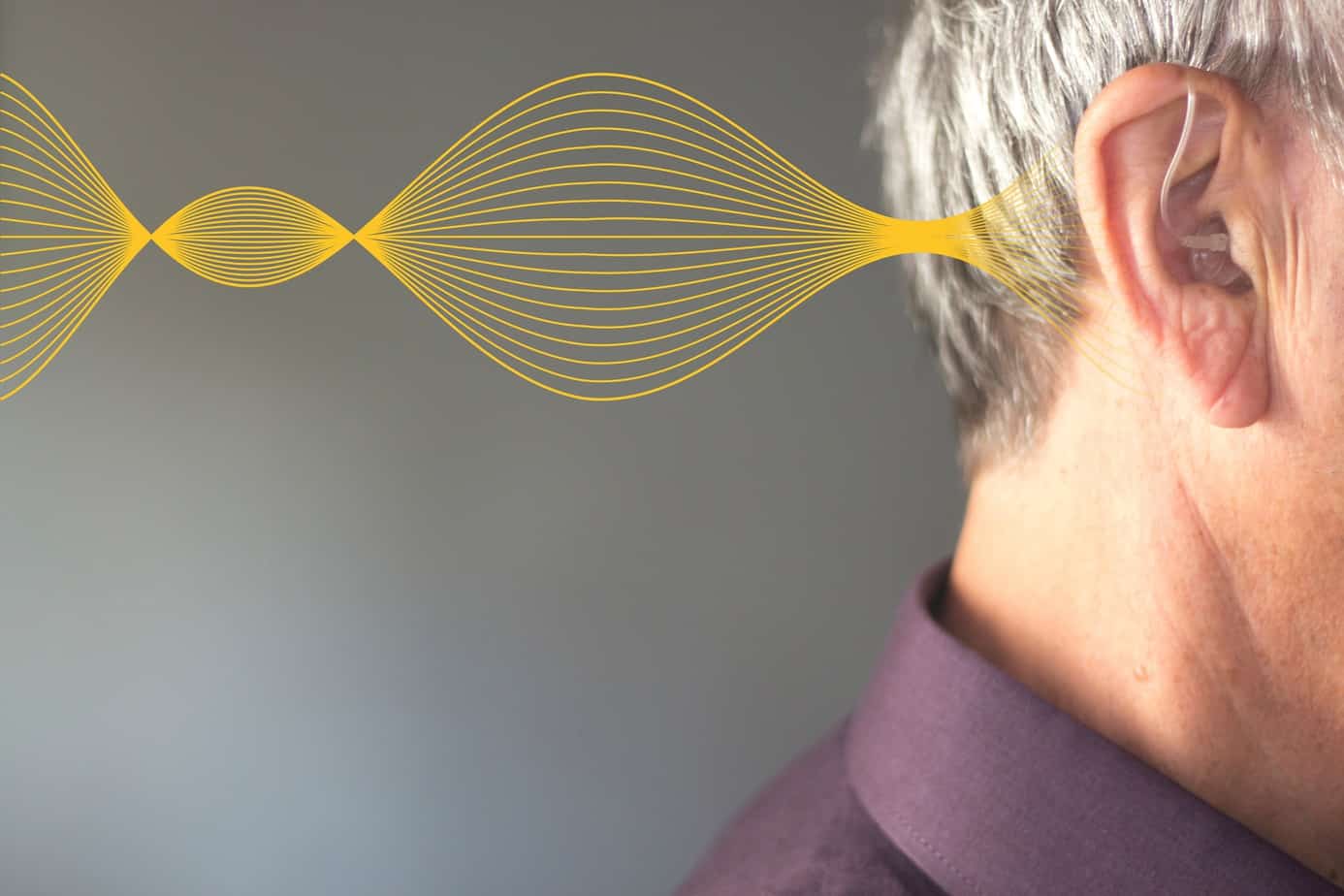The technology, design and capabilities of the Cochlear™ Baha® Implant System or a bone conduction implant system, vastly differ from those of a hearing aid.
How Hearing Aids Work
Hearing aids are small electronic devices that capture sound and make it louder. They are typically a solution for those who have mild to severe hearing loss and have some remaining healthy sensory hair cells in the damaged inner ear (cochlea) that can transmit sound to the hearing nerve using amplification.
- Medicare and many other insurance plans do not cover hearing aids
- Over 70% of people who use hearing aids have to pay out-of-pocket since Medicaid and Medicare typically don’t cover the cost of hearing aids1
- If your hearing aid’s volume is maxed out, it’s most likely not helping you hear better
- Hearing aids might not help those who have malformations of the outer or middle parts of the ear because sound may not effectively travel to the ear canal.

How Baha Implant Systems Work
Baha Implant Systems, or bone conduction implant systems, use direct bone conduction to transmit the sound vibrations through the bones in the skull to the healthy inner ear using a small implant placed in the bone behind the ear. Through bone conduction, sound bypasses the damaged part of the outer or middle ear and sends clearer, crisper sound directly to your inner ear.2
- A bone conduction implant system or a Baha Implant System are considered Auditory Osseointegrated Implants and covered by Medicare. They are also covered by many insurance plans and typically Medicaid.3
- The Baha Implant System is a permanent, clinically proven medical treatment option for those with single-sided deafness, conductive and mixed hearing loss
- A Baha Implant System bypasses the outer and middle ear, which makes it an ideal hearing solution for those who have ear abnormalities or suffer from chronic ear infections
- Since bone conduction vibrations don’t amplify sound, a bone conduction hearing aid causes no further damage to your inner ear
Could a Cochlear Baha Implant System help you?
If you have single-sided deafness, conductive or mixed hearing loss the Cochlear Baha Implant System could be the hearing solution you have been looking for. For the past 40 years, more than 150,000 people worldwide have benefited from bone conduction implant technology.
Benefits of the Cochlear Baha Implant System
 Research and decades of experience prove that the Baha Implant System may help you:
Research and decades of experience prove that the Baha Implant System may help you:
- Hear better, even in noisy environments45
- Become more aware of your surroundings and increase your ability to hear important sounds6
- Hear sounds more naturally through bone conduction, which reduces the need for additional amplification
- Experience enhanced sound quality and speech recognition78910111213
- Easily engage in conversations because you no longer have to turn your head to use your “good ear”
Discover more about the benefits of hearing through bone conduction and to see if a Cochlear Baha Implant System is right for you.
- Arnold, M., Hyer, K., & Chisolm, T. (2017, August). Medicaid Hearing Aid Coverage For Older Adult Beneficiaries: A State-By-State Comparison. Retrieved November 12, 2018, from https://www.healthaffairs.org/doi/full/10.1377/hlthaff.2016.1610#EX2
- Gustafsson J. BCDrive performance vs. conventional bone conduction transducer. Cochlear Bone Anchored Solutions AB, 629908, 2015.
- Covered for Medicare beneficiaries who meet CMS criteria for coverage. Coverage for adult Medicaid recipients varies according to state specific guidelines.
- Flynn MC, Sadeghi A, Halvarsson G. Baha solutions for patients with severe mixed hearing loss. Cochlear Implants Int 2009;10 Suppl 1:43-7.
- Watson GJ, Silva S, Lawless T, Harling JL, Sheehan PZ. Bone anchored hearing aids: a preliminary assessment of the impact on outpatients and cost when rehabilitating hearing in chronic suppurative otitis media. Clin Otolaryngol 2008;33:338–342.
- Flynn MC, Sadeghi A, Halvarsson G. Baha solutions for patients with severe mixed hearing loss. Cochlear Implants Int 2009;10 Suppl 1:43-7.
- Pai I, Kelleher C, Nunn T, et al. Outcome of bone-anchored hearing aids for single sided deafness: a prospective study. Acta Otolaryngol 2012 Jul;132(7):751-5
- Flynn M, Sadeghi A, Halvarsson G. Baha Solutions for patients with severe mixed hearing loss. Cochlear Implants Int (2009)
- Barbara M, Biagini M, Lazzarino I & Monini S. Hearing and quality of life in a south European BAHA population. Acta Otolaryngol 2010 Sept;130(9):1040-7
- Christensen L, Richter GT, Dornhoffer JL. Update on Bone-Anchored Hearing Aids in Pediatric Patients with Profound Unilateral Sensorineural Hearing Loss. Arch Otolaryngol Head Neck Surg 2010;36(2):175-77
- Kim G, Ju H, Lee S, et al. Efficacy of Bone-Anchored Hearing Aids in Single Sided Deafness: A Systematic Review. Otol Neurotol 2017 Apr;38(4):473-483
- Ricci G, Volpe A, Farali M, et al. Evaluation of long-term patient satisfaction and experience with the Baha® bone conduction implant. Int J Audiol 2012 Mar;51(3):194-9
- Snapp H, Holt F, Liu X and Rajguru S. Comparison of Speech-in-Noise and Localization Benefits in Unilateral Hearing Loss Subjects Using Contralateral Routing of Signal Hearing Aids or Bone-Anchored Implants. Otol Neurotol 2017 Jan;38(1):11-18